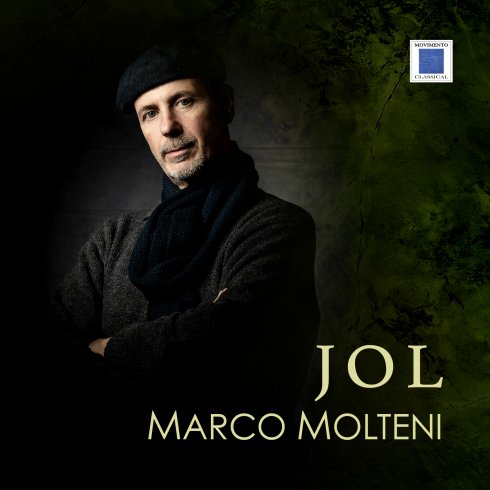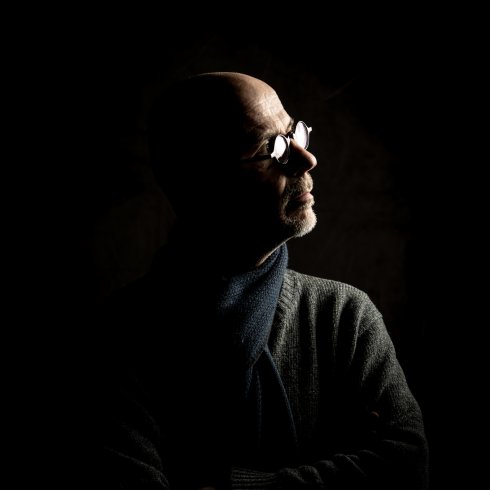

Jol
JOL
The scholar Jean-Jacques Nattiez, while engaged in trying to take apart superficial ideas on thai so mysterious matter, which is the meaning of Music, researcher Jean-Jacques Nattiez, recalls an experiment held in a class of children. Alter playing ''The Sorcerer's Apprentice' by Dukas (quite known by most of the big audience thanks to that marvellous movie which is Fantasy, except by the children), Nattiez asks the young listeners to tel1
"what happens " in that music. The children take different sides of opinion. According to one of them, we linci ourselves "in a toyshop at night", "all is calm", "suddenly a toy awakens" and "a tin soldier is courting a doli": however, "at dawn the shop keeper returns, and everything is at its piace". For another, "a man is calmly walking in the street when some dogs arrive", "he runs away as far as a tree" and alter a few obstacles on the road, finally "the dogs leave". Nattiez comments : obviously, "it would have been as astonishing lor Goethe's poetry to come to the children's mind as it would have been lor a monkey in front of a computer to have typed 'The Name of the Rose". Yet, in the majority of the childlike descriptions, Nattiez identifies some common and recognizable circum stances: the initial stasis, a first event, a dialectic among the things and reactions that are occurring, and lastly, a comeback to the stasis.
The music is clear.
In Marco Molteni's music, certain signs are unmistakable in their embodiment of a b lunt, positive and unstoppable energy. These are sequences of impetus from Folio Cinque (Oh! Be A Fine Giri, Kiss Me), that flow, rear up, fall and again they soar. They flow while fluttering, joyfully excited: the soul of jazz lives within them, especially those forms that from be-bop onwards have learnt to make the body vibrate, to set free energies that would otherwise remain locked up in a sale zone. In Folio Dodici (Joy of Lite), these energies triumph unstable, they lean towards distinctively tribal sonorities, as when the pianist beats furiously the lowest key on the piano: perhaps, is il not the civilization and "good behaviour" that refrain the outspring of big parts of everyday lite? The act of danc ing also means playing. Almost as a game the pianist in Folio Tre (troublemaker's breaking stomp) can choose to stop the run on almost any sound, almost "hitting against it'', stopping there as much as he desires, in order to then get back on track (and then stop, il he will). The two marimbas from Hot Cucumbers and Beans play and from time to time they are lighted up by a certain harmony, that C major that has always said white and light in music. (For fun, the two instruments in the middle of the track seem lo lenci themselves to a fugato: a mixture of those old contrapuntal methods thai were taught and stili are taught in academies). And yet in different places, in different signs, can manifest that which is totaliy other.li!llt's where the energy falis silent: the gaze is fixed on the void, the eyelids no longer blink, the beholder gets taken in by the object while in a stili contemplation. lt's the long notes on the clarinet's treble register in Yellow lor Piet, without vibrato, at a very calm pace. lt's the "delicate and dreamy'' episode from lncoming Cali: the finge rtip, the harmonic sounds, just two notes in a slow fluctuation, in which to lose memory of what had been music up until then. The usual dialectic of thought quietens, and no more questions are asked: ali is to see and nothing else. And when the speli is broken - when you get back to the music, the "real" one, which lives and flows - il is the latter that seems out of piace and estranged.
ls the music clear? This is what we ask ourselves, not only in each sign, but also in their act of placing themselves in time, creating stories. Il in a piece (without mentioning which, in arder to avoid spoilersAet us not mention to avoid spoilers) the element of other bursts firstly in a fleeting way, but by doing so it already puts to run the certainties of a way tac thoughtless and way tao casual energy- andtherefore this one gradualiy needs to regain confidence and start aver- until an irresistible bocgie-wocgie - but then the other, the Sphinx is there again, now in a total manner - there's only time lor an extreme and brief move of waltz, the one from which actualiy ali starleci, but we hadn't understocd it at the time, maybe not even grasped it - this way if one of these pieces, we were saying, aligned with its signs, therefore it would almost seem as il we'd be able to understand it. We wouldn't know how to transiate it into another language, we wouldn't be able to put it into words (or il we tried, we'd betray more than what we'd gain), however you'd have the impression of picking up/grasping on a meaning, one among the many possible.
The music isn't clear.
Listening to Green Papaya, the two flutes seem to be free to stop and start aver, one direction alter the other. Nonetheless, the apparent freedom does not break the chains of a vague obsession: it is as if the barriers of all their explorations had been already set from the start, they do not know it yet, bui they are prisoners of their own fantasy. The energy that lives within Folio Quattro (Burlesca del velo di Tisbe) is direct, strong, it is true, but doesn't it seem to go round and round? In the first pages of Yeliow lor Piet, the energy is manifested by tightrope walking figures.However, isn't the beat-the breath -tao swift? In the field of human physiology, which "real" energy (not
forged, not gane through the lent of doubt or of an iliusion) could realiy express itself at this staggering pace? Maybe what is not clear is this: il music telis us what it is - or what it may be - or what it may not ever be, because it is not in the arder of things - then, it is normai that at such a time, at such a listening, even the most vivacious of the pages can show the shadow of melancholy or even of inconsistency.
In verbal language, we can employ irony, throughout the intonation of the voice and the many nuances of physical communication: this does not equivalate to always laughing and joking , but rather to say something to mean its apposite - implying that we do not believe in it, or that we know that we will noVshall not have it forever.
Marco Molteni's music stages a labyrinth, as lor example in Folio Nove (Non più tardi di ieri, ancora oggi), or in Memory walk (/rom Three Pills). The music attempts to a direction to then go backwards and repeat itselt: or it goes forwards and then it turns out to be exactly at the same point as be/ore. lt is the labyrinth of music, which is unclear whether it finds a way out and even which one it is. But it is also the labyrinth ot listening: in the pursuit of a meaning and from a page such as Folio Nove, infinite breakthroughs and passageways will be more easily remembered , rather than the enigmatic appearance of a gateway that leads out of them.
Il the music isn't clear, then the decision of writing it (and to write it in this manner ot which we are saying) is the decisive trait. The composer knows all the ambiguities, he knows the labyrinth and all that it will not be: yet he writes and creates his stories without a story, in a language that is nota language. The result is an intense poetry, that sometimes takes up all the page. In Folio Uno (Valzer lento) you encounter that kind of music that we happen to come upon in our dreams, then once awakened we only remember that all the world's wonder was in il. In Folio Due (Stelutis Alpinis) what we find is a folkloristic chant that descends upon an analogous seclusion from time. In Tagging Lunar Eclipse 4 we come across a familiar music, which almost jokingly lends her sensuality. AII these pieces are reunited into a unique record filled with many performers and paths. AII the other tracks surround Folio Dodici (Joy ot Lite), mirroring each other around it. lt is evident that the tist track is associateci with the last one (same track, but with the addition ot the drums) - but halfway through the record, we can also find symmetrical pieces , such as the two versions of Sillabario dei tempi incerti Il, two pieces lor the organ (Mir and the extract !rom Sei brevi per organo), then more subtle connections bind the other pairs. The glue and compulsory stop is the piano, to which the series of sheets ot papers are intended. Then there's the title. Whoever knows Marco Molteni can or imagines how this was not without hesitation. However, that is what it is: music doesn't lie, Joy ot Lite is authentic. The doubt we feed on when interrogating ourselves upon things, we erase by living them. In the composer's act of writing music there is no irony- il not the unavoidable, sweet, and benevolent kind, that supports us while we're walking on the edge of the shadows.


Marco Molteni
Marco Molteni (Mariano Comense 1962) studied composition with Luciano Chailly and Giuseppe Giuliano at the G.Verdi Conservatory in Milan and electronic music with Riccardo Sinigaglia.
In the 1980s he attended specialisation courses in composition held by Franco Donatoni at the Accademia Chigiana in Siena and the French MC2 Musique Contemporaine in Avignon.
In 1985 he attended the Atelier de Recherche Instrumental organised by french flutist Pierre Yves Artaud at Ircam in Paris.
From 1986 to 1994 he took part in the Ferienkurse fur Neue Musik in Darmstadt.
His music has been repeatedly awarded prizes at important national and international composition competitions and is published by UE Universal Edition and Ars Publica.
